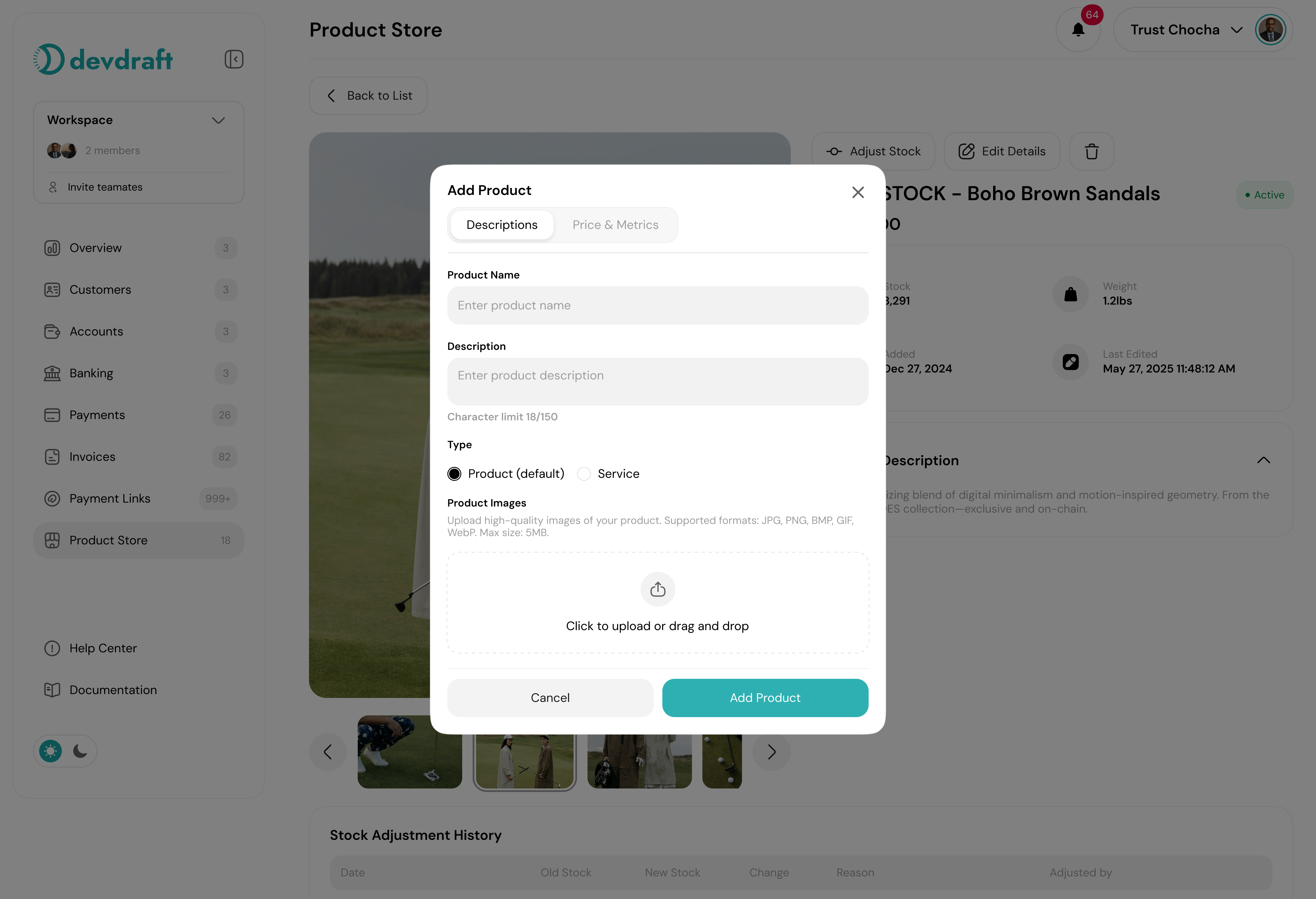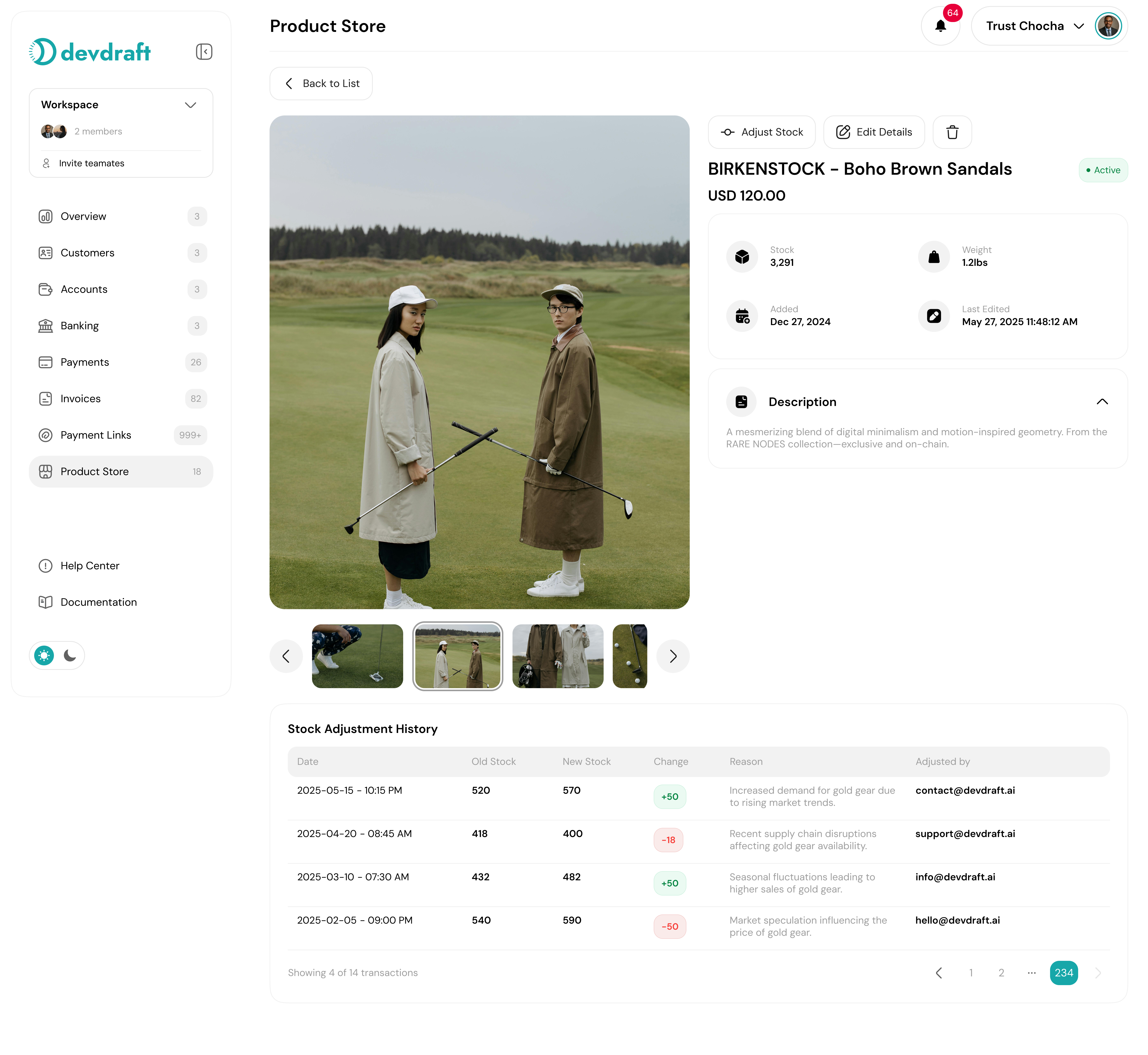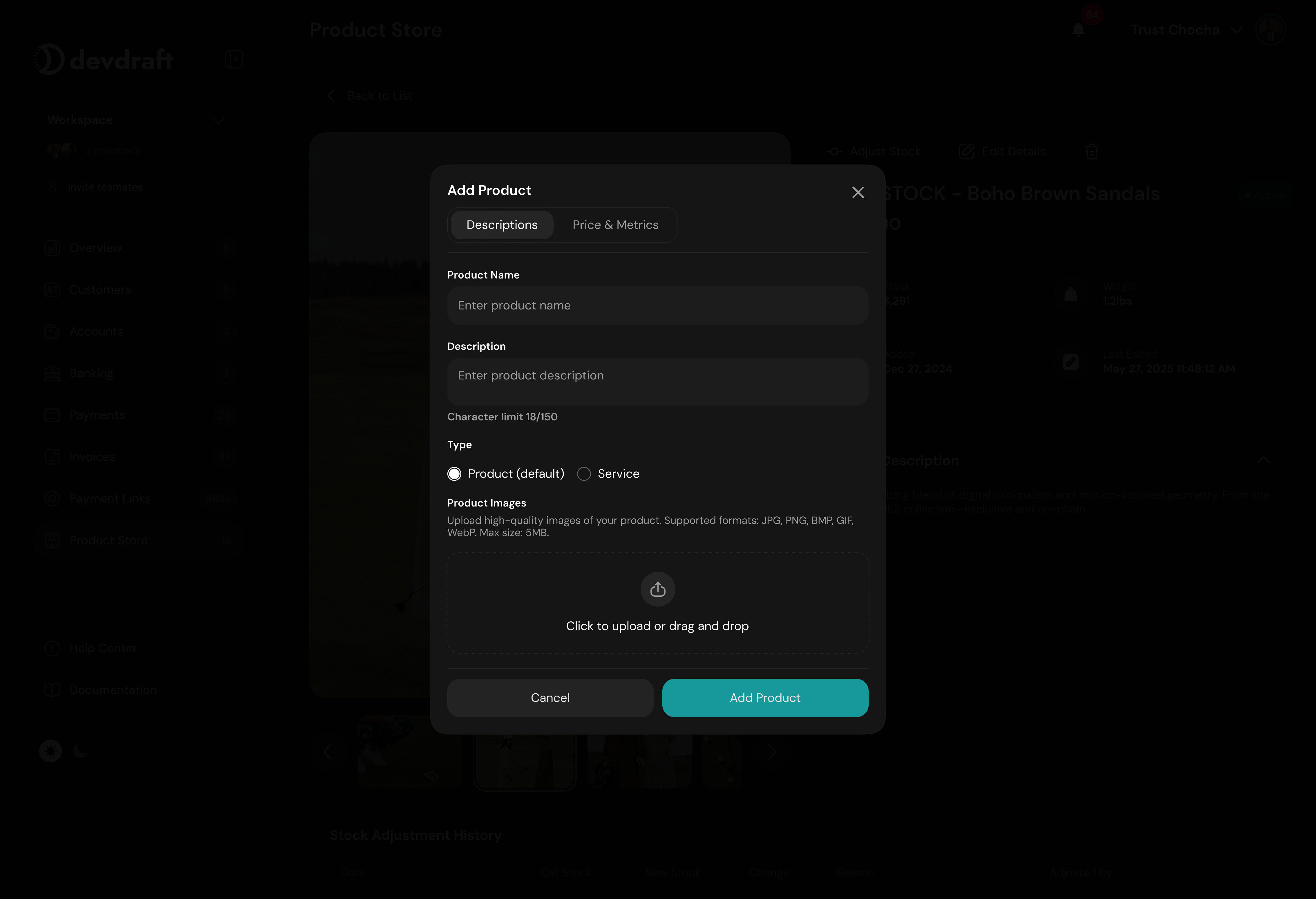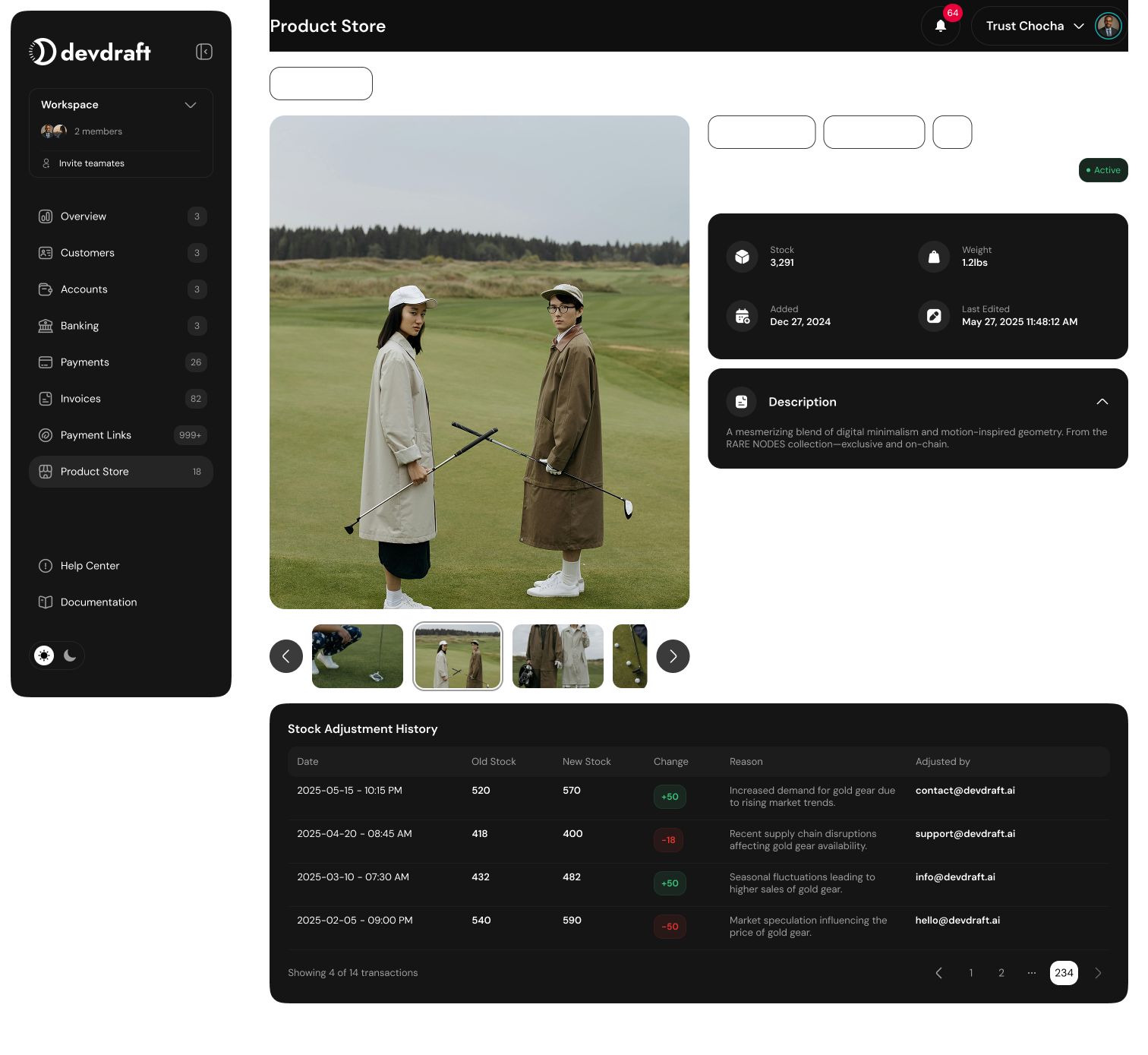Products
Create and manage all your products from one central location. Set up digital downloads, physical goods, services, and donations with inventory tracking and performance analytics.
Creating a Product
1
Navigate to Product Store
In the Devdraft Console, go to Product Store → Products.
You’ll see your existing products or an empty state if you’re just getting started.
2
Create New Product
Click Add Product and select the product type:

Add Product Interface
- Digital Product: Downloads, software, e-books
- Physical Product: Tangible goods with shipping
- Service: Consulting, subscriptions, memberships
- Donation: One-time or recurring contributions
3
Configure Product Details
Fill in the required information:

Product Details Configuration
- Product name and description
- Price and currency
- Product images or files
- Inventory settings (if applicable)
- Delivery method
4
Set Up Payment Options
Configure payment methods and any additional options:
- Accepted payment methods
- Tax settings
- Discount codes
- Subscription settings (if applicable)
Product Types
- Digital Products
- Physical Products
- Services
- Donations
Best for: Downloads, software, e-books, courses
- Instant delivery after payment
- No shipping costs
- Can include multiple files
- Automatic download links
Product Configuration
Basic Information
Product Details Checklist
- ✅ Clear, descriptive product name
- ✅ Detailed product description
- ✅ High-quality product images
- ✅ Accurate pricing information
- ✅ Proper categorization
Pricing and Currency
1
Set Base Price
Enter the primary price for your product in your default currency.
You can accept multiple currencies, but this sets your base price for calculations.
2
Configure Multiple Currencies
Enable additional currencies if you serve international customers.
3
Set Up Discounts
Configure discount codes, bulk pricing, or promotional offers.
Inventory Management
Inventory tracking helps prevent overselling and provides insights into product performance.
1
Enable Inventory Tracking
Toggle inventory tracking for products with limited stock.
2
Set Initial Stock
Enter the starting quantity available for sale.
3
Configure Alerts
Set up notifications for low stock levels:
- Low stock threshold (e.g., 10 items)
- Out of stock notifications
- Reorder reminders
Managing Your Products
Product Organization
Organization Tips
- Use categories to group related products
- Add tags for easy filtering and search
- Set featured products for homepage display
- Archive inactive products instead of deleting
Bulk Operations
1
Select Products
Use checkboxes to select multiple products for bulk operations.
2
Choose Action
Available bulk actions:
- Update pricing
- Change categories
- Enable/disable products
- Export product data
- Delete products
3
Apply Changes
Review changes and confirm to apply to all selected products.
Performance Metrics
Monitor your product performance with comprehensive analytics:Key Metrics
Sales Performance
- Total revenue
- Units sold
- Average order value
- Conversion rate
Product Analytics
- Top-performing products
- Inventory turnover
- Customer feedback
- Return rates
Payment Links
Generate shareable payment links for your products:Creating Payment Links
1
Select Product
Choose the product you want to create a link for.
2
Generate Link
Click Create Payment Link to generate a unique URL.
3
Customize Link
Optional customizations:
- Custom domain
- Pre-filled customer information
- Discount codes
- Expiration dates
4
Share Link
Copy and share the link via email, social media, or your website.
Success Tips
1
Optimize Product Information
- Use high-quality, professional product images
- Write compelling, benefit-focused descriptions
- Set competitive but profitable pricing
2
Manage Inventory Effectively
- Regularly update inventory levels
- Set up low stock alerts
- Monitor and respond to customer feedback
3
Track Performance
- Monitor which products are most popular
- Test different product configurations
- Use analytics to optimize pricing and descriptions
Regular performance monitoring helps you understand customer preferences and improve your offerings.



